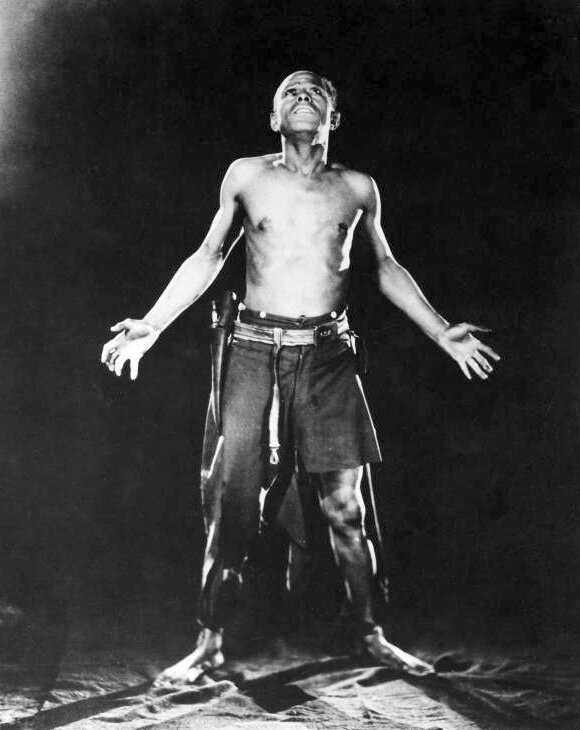The Emperor Jones debuts
One hundred years ago today … The Emperor Jones opened at the Provincetown Playhouse, 133 MacDougal Street. Eugene O'Neill's drama starred Charles Gilpin playing an African American, a one time Pullman Porter, who escapes the US criminal justice system and becomes the ruler of a West Indian Island. The Emperor Jones is credited with being the first US drama featuring a Black protagonist written by a white playwright for white audiences. David Levering Lewis writes that the play's 1920 appearance announced that "the possibilities of black themes seemed greater than ever" for New York theater. (91)
Numerous photos from the original stage production, likely taken by Francis Bruguière, appear in the January 1921 issue of Current Opinion, which Hathitrust hath helpfully digitally archived.
Current Opinion, January 1921, Volume 70 Number 1, p.55. Hathitrust..
Current Opinion, January 1921, Volume 70 Number 1, p.58. Hathitrust..
Current Opinion, January 1921, Volume 70 Number 1, p.56. Hathitrust..
Current Opinion, January 1921, Volume 70 Number 1, p.60.. Hathitrust..
The Brownies Book also printed photos attributed to Bruguière.
The Brownies' Book, Volume 2 Number 7, p. 211. Wikicommons.
A November 13 report in the New York Age informs us that Gilpin was the only Black actor in the cast. We can infer that actors, such as Christine Ell and Charles Ellis, wore blackface. The Age also hints that Gilpin was a controversial choice for the role. (Note: We will be back to discuss Gilpin more specifically in later NY1920 posts.)
New York Age, 13 November 1920, p. 4. Chronicling America.
The Age article incorporates bits of reviews by highly regarded literary critics Alexander Woollcott and Heyward Broun (both members of the Algonquin circle, which has arisen in a few NY1920 posts, such as this one about the firing of Dorothy Parker), Woollcott and Broun were bound to review the play, because the Provincetown Playhouse was one of the most prestigious theaters in NYC, home of the Provincetown Players, which had been founded by O'Neill and others, including Louis Bryant. (See our post of April 15, 1920.)
The Emperor Jones would move on to the Selwyn Theater in December, occasioning a writeup by another Algonquin critic, Parker herself. Parker applauds the play’s move, as "at the Provincetown Theater, where it was playing, only about six people could behold it at one time, eight, when the standing room was filled" (197).
The play would run through April 1921, 204 performances. Despite its dated elements, it has been staged regularly over the last 100 years. Paul Robeson took over the lead role from Gilpin for a 1925 production and starred in the 1933 film adaptation, which you can see here.
See the full text of The Emperor Jones here.
References/Further reading:
Lewis, David Levering. When Harlem Was in Vogue. New York: Vintage Books, 1979.
Parker, Dorothy. Complete Broadway. Ed. Kevin C, Fitzpatrick. Bloomington: Donald Books, 2014.
WRITTEN BY JONATHAN GOLDMAN, NOVEMBER 1, 2020.
TAGS: theater, drama, acting, arts, African American history, Black history, race, controversies, modernism






